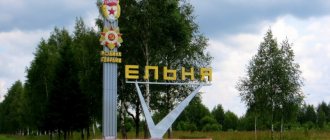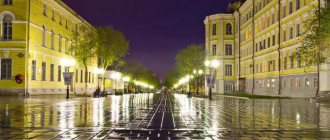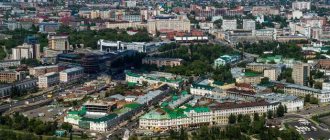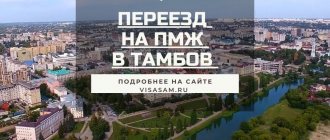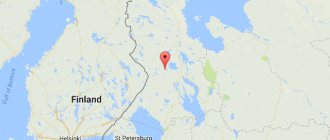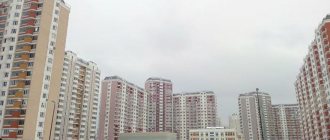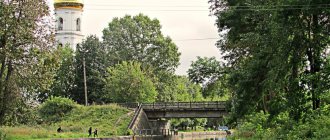“The city is great and full of people” - this is how the Ustyuzhan Chronicle of the 9th century describes the glorious ancient Smolensk. This is the very first mention of the glorious Smolensk region. For the second millennium, an ancient Russian city has been standing on the banks of the Dnieper, which has become a major regional center. Traveling through these places becomes a real discovery of the glorious region. Not only the nature and architecture are surprising, but also the population of the Smolensk region. Guests here are always greeted warmly, with Russian grandeur.
Location of the Smolensk region
The western borders of the Russian land are framed by the glorious Smolensk lands, which can be compared to a wise old warrior guarding peace. And, indeed, more than once this heroic city became a shield for Russia. Smolensk itself is located in the upper reaches of the Dnieper River at a distance of 365 km from Moscow. The Smolensk region is a subject of the Russian Federation and is part of the Central Federal District.
The city, which originated on seven hills, along which the trade route from the “Varyags to the Greeks” passed, became the center of many settlements. Today, the Smolensk region has a common border with the Bryansk, Pskov, Moscow, Kaluga, and Tver regions. Belarus adjoins the Smolensk region with the Vitebsk and Mogilev regions. The region was formed in 1937.
Hotels in Smolensk
Situated on the Dnieper on the road from Moscow to Belarus, Smolensk has important transport significance. You can stay for a day or two in Smolensk and see the sights of the hero city in one of the hotels located in the Zadneprovsky, Industrial and Leninsky districts of Smolensk.
Smolensk hotels have options for four-star and three-star accommodation. All of them have good reviews from guests, and they offer guests various types of rooms, swimming pools and saunas, as well as a variety of cuisines in hotel restaurants.
Also in Smolensk there are more budget options for hotels with a 2* category. But the most numerous type of hotels is without stars. These include all kinds of apartments, mini-hotels with several rooms, and affordable hostels. Often mini-hotels in Smolensk are located next to restaurants, which makes it easier for guests to find catering establishments.
In a number of similar hotels in Smolensk you can choose a studio room. In many non-star hotels, breakfast will be included in the room rate. You can find out these, as well as many other parameters for choosing a hotel, from the information on our website. For ease of booking, our resource provides all contact numbers of hotels in Smolensk.
Brief description of the area
The Smolensk region occupies about 50,000 km in the center of the East European Plain. There are both highlands and lowlands here. The climate here is moderate continental, as the climate zone is temperate. Driving through this area, you can observe wavy surfaces, hilly areas, and river valleys.
On the territory of the Smolensk region there are many minerals of sedimentary origin. Here you can encounter deposits of brown coal, peat, rock salt, loam, and clay. Nature has not deprived these lands of healing mud and mineral waters. Sometimes there are deposits of rock crystal, silicon, ore, and ocher. Peat reserves in this area are very large. Sand, gravel, and gypsum are mined here for construction work.
In winter the temperature here is moderately frosty, in summer it is warm and rainy. Such tributaries of the Dnieper as the Vyazma, Vop, Desna, and Sozh flow through the region. From here such large rivers as the Volga and Oka, into which the Vazuza and Ugra flow, also replenish their water reserves.
The main area of the Smolensk region is occupied by sod-podzolic soils. Sometimes there are sandy and loamy areas. There are many forests, meadows, and swamps in this region. Cultivated plants are widely planted. The main representatives of forests are spruce, birch, and aspen. Oaks, maples, ash trees, and linden trees are slightly less represented. The fauna here is represented by many species of mammals and birds. About 50 species of fish are found in local reservoirs.
Historical information
Initially, the Krivichi lived on the lands of the Smolensk region; the population of the Smolensk region originates from them. Then the city was under the control of Kievan Rus for a long time. The heyday of the Smolensk Principality occurred in the 12th century. For some time, part of the lands was part of the Lithuanian Principality, and later they were annexed by the Moscow Principality. The final transition of the Smolensk lands to the Russian state occurred after the Russian-Polish confrontations. This is how the Smolensk province arose in the 18th century.
At the beginning of the Soviet period, some part of the Smolensk region was part of the Belarusian SSR. And since 1937 it has acquired modern borders.
Population of the Smolensk region
The 2010 All-Russian Census found that out of 18 regions of the Central District of the Federation, the Smolensk Territory took 16th place. The population of the Smolensk region then amounted to 985,500 people. During historical events, this figure changed very often. According to Rosstat, in 2013 the population density of the Smolensk region was 19.59 people per sq. km. The decrease in density was once greatly influenced by urbanization.
The urban population significantly exceeds the number of rural residents. So this ratio is equal to 72% of urban residents to 28% of the rural population. The number of women in relation to men is also significantly higher. The number of women is currently 536,900, and men - 448,600.
In the capital of the region, the city of Smolensk, according to estimates as of January 2017, 328,906 people live.
Transport in Smolensk
In the image and likeness of small cities, Smolensk has three types of public transport: tram, bus, trolleybus and minibus. For those people who for some reason do not like public transport in the city, there are taxis and private car rentals.
Residents of the city give their preference to trams; 4 routes cover almost the entire territory of the city, excluding very recently built areas. Tickets for public transport are purchased directly on the transport from the conductor. True, to save money, you can buy a ticket for both one and all types of transport.
Population of the Smolensk region by city and district
The largest city in the Smolensk region, of course, is the capital of the region - Smolensk. The size of this city was mentioned above. The second largest is the glorious regional center of Vyazma, where 54,259 people live. Following it is the city of Roslavl with a population of 51,775 inhabitants. The regional centers of Yartsevo and Safonovo are almost identical in number of people (46,219 and 43,727). The city of Gagarin has a population of 26,916 people, and Desnogorsk has a population of 28,518. Here are other, less populated cities in the Smolensk region by population:
- Rudnya - 9,650.
- Yelnya - 9 460.
- Repairs - 8,684.
- Sychevka - 8,246.
- Velizh - 7,078.
- Demidov - 6,585.
- Spirituality - 4,125.
The population of the districts of the Smolensk region has the following indicators:
- Velizh district - 11,114.
- Vyazemsky district - 77,359.
- Gagarinsky district - 45,940.
- Glinkovsky district - 4,404.
- Demidovsky district - 12 310.
- Dorogobuzhsky district - 27,376.
- Dukhovshchinsky district - 15,484.
- Elninsky district - 13,846.
- Ershichi district - 6,444.
- Kardymovsky district - 12,499.
- Krasninsky district - 12,269.
- Monastyrshchinsky district - 9,472.
- Novoduginsky district - 9 603.
- Pochinkovsky district - 29,851.
- Roslavl district - 71,990.
- Rudnyansky district - 23,562.
- Safonovsky district - 58,803.
- Smolensk district - 53,889.
- Sychevsky district - 13,807.
- Temkinsky district - 5,971.
- Ugransky district - 8,190.
- Khislavichsky district - 8 106.
- Kholm-Zhirkovsky district - 9,754.
- Shumyachsky district - 9,909.
- Yartsevo district - 54,231.
Latest Population Counts
The population of the Smolensk region in 2016 was 958,600 people. As of January 1 of this year, there were 690,000 (72%) urban residents, 268,600 (28%) rural residents. It should be noted that the western regions of the region are more populated than the rest. The smallest population is in the eastern regions (Temkinsky, Ugransky). The number of children and adolescents is 336,000. The population of the Smolensk region in 2016 decreased by 6,000 people compared to 2015.
Administrative division
The Smolensk region includes 24 districts, 23 urban settlements, 278 rural settlements and 2 urban districts (Smolensk and Desnogorsk). There are a total of 257 municipalities within the district of the same name. These include 207 rural settlements, 23 urban settlements, 25 municipal districts and 2 urban districts.
Natural attractions
To preserve natural complexes, as well as for scientific purposes, the Smolensk Lake District was created in the region. This reserve received this name because of the 35 lakes that are part of it. Each of them is famous for its unique beauty. Visitors to the Smolensk Lake District plunge into a fabulous atmosphere. There are many historical monuments located on the territory of the reserve. One of them is the ancient ancient Russian city of Verzhavsk, which flourished in the 9th-12th centuries.
These amazingly beautiful places are also associated with the great traveler and explorer of Asian lands - N. M. Przhevalsky. Many tourists and locals know the famous spring called the “Holy Well”.
Sights of Smolensk
The history of the city and its inhabitants have created a wonderful atmosphere that allows tourists of any age to visit Smolensk. The provincial charm, ancient traditions and unique culture of the city have been preserved, despite the rapid development of modern civilization. Yes, Smolensk is moving towards a new life with quick and confident steps, but city residents still remember the great past: ancient churches are being restored, interesting museums are being created, creative cafes are opening, and the central streets of the city and green park alleys offer strolls under their arches.
One of the main attractions of Smolensk is the Holy Assumption Cathedral, which is located on Cathedral Hill and can be seen from almost every part of the city. Having retained its shining golden domes, the beautiful cathedral is rightfully one of the majestic temples of our country. It houses the Smolensk Icon of the Mother of God Hodegetria.
An equally outstanding landmark is the Smolensk fortress wall. Its construction, as an important defensive structure, dates back to the late 16th and early 17th centuries. The length of the wall is 6.5 km and includes 38 towers, although only 18 of them have survived at present.
By decree of Tsar Vasily III, the Ascension Monastery was built in 1515. Initially, all the buildings of the monastery were made of wood, and later, by decree of Peter I, it acquired a new appearance of stone. But not only Orthodox churches were built on the territory of the city; one of these churches, the Church of the Immaculate Conception of the Blessed Virgin Mary, is a Catholic church that is now inactive. It was made in the neo-Gothic style in 1884-1896.
On the 100th anniversary of the fateful Battle of Borodino, it was decided to open the Alley of Heroes, on which on August 26, 1912, a bust of Colonel M.I. the Victorious was installed. Kutuzov, and on the occasion of the 175th anniversary, busts of P.I. Bagrationa, M.B. Barclay de Tolly. Also, during the Great Patriotic War, soldiers who died in battles were buried in the garden. Now on this site there is a memorial complex of WWII heroes.
Architectural monuments
Among the most ancient architectural buildings in Smolensk, one can highlight the stone fortress. It was built under the leadership of Tsar Fyodor Ioanovich, since in the 16th-17th centuries territorial disputes arose between the Principality of Moscow and the Polish-Lithuanian Commonwealth. About 30,000 hired workers were used for this construction. This architectural monument consists of fortress walls and 38 towers, some of them reaching 33 meters in height. This is the most powerful wall of Russian times. The construction was supervised by the famous Smolensk master Fyodor Kon.
In the Smolensk region, like no other, monuments of Russian culture of the pre-Mongol period have been preserved. Here you can find works in the Baroque style, as well as unsurpassed examples of church construction.
In Smolensk there are several memorial signs and complexes that capture the memory of many military events. Also, many monumental monuments dedicated to famous fellow countrymen appeared here. “The green necklace of the city” is what the residents of Smolensk call their parks and squares.
Smolensk in our time
Smolensk is a cultural, administrative and industrial center not only of the Smolensk region itself, but also of the western part of Russia as a whole. One of the oldest cities in Russia, it was awarded the title “Hero City”, and in 1985 it was also awarded the honorary Order of Lenin and the Order of the Great Patriotic War, 1st degree.
Today the city is twelve centuries old, but its appearance is changing. Infrastructure and priority areas are developing, but the city treats its glorious past with care, and therefore the architectural monuments of old times are organically combined with the latest buildings. Smolensk is rightfully considered one of the most beautiful cities in Russia. See for yourself and love this city with all your heart when you walk along the shady green streets, enjoy the beauty of the most ancient architectural monuments and feel the majesty of the powerful fortress wall and divine temples.
Undoubtedly, the appearance of the city is created and shaped by its nature: parks, nature reserves, lakes. Here, for lovers of wildlife, we invite you to breathe in the purest forest air and look into the places of the Smolensk Poozerie National Park, where untouched corners of nature are still preserved.
Major museums and Orthodox churches
Many people have heard of the village of Boldino, in the Smolensk region. Very often tourists go there on excursions. One of the oldest and most beautiful objects here is the Holy Trinity Monastery. It was founded by the Venerable Gerasim of Boldinsky back in the 6th century. This temple has already been restored several times, but it also continues to delight its visitors.
In the village of Novospasskoye, Smolensk region, there is the museum-estate of M. I. Glinka, where he once lived. This estate is the only monument dedicated to the famous Russian composer. The estate consists of a main two-story house, a kitchen annex, a guest room, a bakery, a carriage house, beautiful gazebos and a family temple. Very often guests of the estate hear the enchanting sounds of a piano.
In the village of Khmelita, Smolensk region, the former estate of the Griboyedov family has been preserved. Some features of this building can be recognized in his immortal comedy “Woe from Wit”. The palace and park ensemble includes a stone house, 4 outbuildings, a park with alleys, 2 ponds and a temple.
Between the villages of Gnezdovo and Katyn, Smolensk region, the Katyn memorial complex is located. For a very long time during the Soviet period, this place was not mentioned, since tragic events took place here in 1940. It was in the local forest that several tens of thousands of Polish officers and other prisoners were shot. The memorial complex is very young; it was opened in 2000. The main entrance to the memorial is made in the form of glass gates. In the center of the complex there is a high Orthodox cross, from which there is a Memory Alley.
A lot of churches were built in the Smolensk region, but from the pre-Mongol period only three have survived: the Intercession Church, the Assumption Cathedral, the temple of St. Sergius in the church of the Ascension Monastery.
